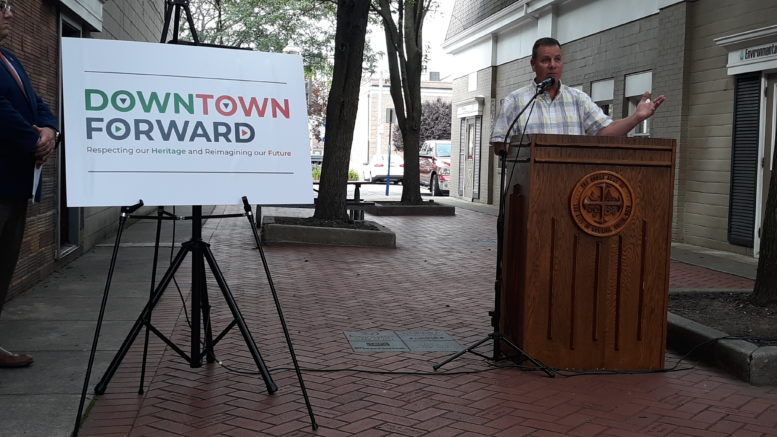The City of Bowling Green, the Center for Regional Development, and Bowling Green State University have completed the downtown Bowling Green’s first Pedestrian Experience Plan (PEP).
The Pedestrian Experience Plan is a strategy that was formulated through Downtown Forward. Downtown Forward is a collaborative initiative to enhance placemaking in downtown Bowling Green. The Downtown Forward partnership was formed after the City of Bowling Green was selected to participate in the Reimagining Rural Regions program with CRD.
Over the last year, CRD staff, graduate assistants, and undergraduate placemaking and community engagement fellows, with guidance from the Downtown Forward Steering Committee, went through an extensive public engagement process. Through two public information sessions last fall, followed by focus groups and a community wide survey, CRD was able to garner feedback from stakeholders in the community. The iterative process brought the Steering Committee to the decision to create a Pedestrian Experience Plan.
The goal of the Pedestrian Experience Plan is to provide Bowling Green with information and project ideas that can be implemented to enhance the walking experience in the downtown.
Today (Sept. 18) at 7 p.m., members from CRD will present the PEP to Bowling Green City Council members. Members of the public are invited to attend.
The plan outlines in more detail the community engagement process used in the planning process, demographic data about Bowling Green, and information and case studies for each area of focus. The areas of focus are:
- Alley Beautification
- Public Art
- Signage/ Wayfinding
The information for the case studies was collected by the PaCE fellows, who conducted peer reviews of projects in other communities, as well as interviews of those involved in the projects to collect firsthand knowledge on how to implement projects that can be replicated in Bowling Green. In addition to the case studies, the PEP includes an “alley inventory” of downtown Bowling Green which is a map and list that identifies the alleys in BG, the status of each alley, and whether it is publicly or privately owned.
The R3 program is funded by the U.S. Economic Development Administration and the USDA Rural Development Rural Placemaking Innovation Challenge.

